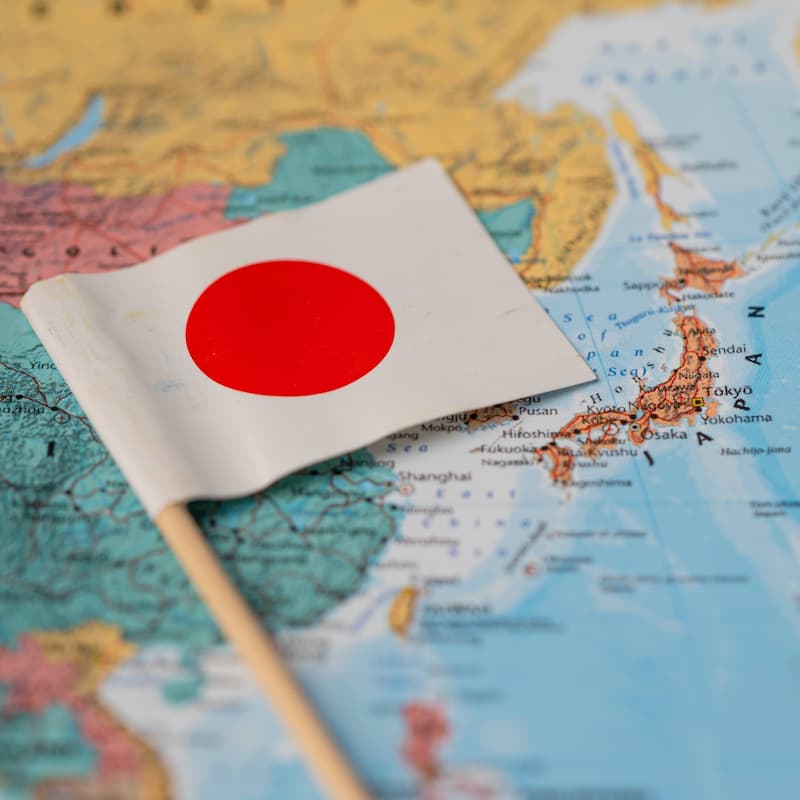Investment Strategies
Japan And India â A View From Chikara

This news service has spoken to a UK-regulated fund management house about its investment approach to Japan and India.
Japan has recovered from a multi-decade period of stagnation and
is winning investment friends again. India has grown rapidly,
with the government reform putting rocket fuel into the
economy.
If investors want to surf the wave of these countriesâ success,
UK-based investment house Chikara wants to hear from
them. The business, a privately held company, concentrates on
running long-only portfolios for Indian, Japan and emerging
market stocks. Family offices feature in its list of end
clients.
For Japan, Chikara looks for companies that have growth and
income-generating qualities. When it comes to India, it looks for
high-quality companies in a low-penetration sector with big
potential. Examples might include the life insurance sector, for
example. Others include 5-star hotels and online booking
platforms.
This news service spoke to Theo Wyld, analyst at Chikara. He
works as an analyst on the Chikara Japan Income & Growth Fund and
the CC Japan Income & Growth Trust plc. For the India part of the
conversation, we spoke to Andy Draycott, portfolio manager of the
Chikara Indian Subcontinent Fund and Abhinav Mehra, ISFCap
Strategic Advisors, independent investment advisor of the
fund.
Japan
The benefit of holding stocks with a blend of income and growth
characteristics is that growth requirements help avoid value
traps and income requirements protect the fund from holding
companies on extreme high valuations, Wyld said.

âIn the medium term, the case for investing in Japan is as strong
as it has ever been,â he said.
The Chikara Japan Income & Growth Fund has 30 to 40 stocks in its
portfolio. It is a UCITS structure and therefore has UCITS limits
on position sizing; it has $246 million in AuM and the investment
trust has $247 million, taking the total for the strategy to
$593 million, based on end-December 2024 figures.
Chikara looks for companies with strong management, cash
generative; strong balance sheets, defensible positions, and
capacity for growth, Wyld said.
A result of its bottom-up stock selection is that the fund has an
overweight stance in financials, he continued. Rising interest
rates have generally been positive for banks and other financial
sector organisations. âMega-banks were a large proportion,â Wyld
said. There has, in recent months, been some diversification of
the portfolio away from financials, however.
âIncome requirements can preclude certain sectors, such as
healthcare,â he said.
Performance for the UCITs fund has been robust. The UCITs
fund delivered returns, on yen-denominated shares, of 18.48 per
cent last year, and 26.34 per cent in 2023, recovering from 1.71
per cent in 2022. That compares to the TOPIX Net TR Index of 20
per cent, 27.77 per cent, -2.45 per cent, for 2024, 2023 and
2022, respectively. (2022 was a poor year generally for
equities.) As for the closed-ended investment trust (CC Japan
Income & Growth Trust plc), total returns, based on the ordinary
share price, were 8.45 per cent in 2024, 23.01 per cent in 2023
and 1.79 per cent in the previous year. For this London-listed
trust, TOPIX TR Index, in sterling, was 10.53 per cent, 12.76 per
cent, and 0.46 per cent, respectively.
With Japanâs broad economic story, there have been three main
drivers of change: improved cashflow generation by firms;
valuation attractions, and corporate governance reforms, Wyld
said.
âIt was not really until 2013â¦it took a long time for the drivers
of change to come to the fore,â he continued. âFor a long time,
Japanese companies put all their cashflow into growthâ¦that
started to change.â
Before the GFC, Japan traded at a premium to the rest of the
world; since around 2012, it has traded at a discount.
Corporate governance reforms, increasing shareholder power,
easing the path towards M&A, etc, still have room to run in
terms of capital efficiency and returns to shareholders, Wyld
said.
Wyld argues that Japan is a good exemplar of the need for active
asset management: âYou need to know what you are buying.â
In his view, some listed Japanese firms should not be listed,
given that they retain cash and donât release it to
shareholders.
India
The country is on an upward slope. Indiaâs household financial
net wealth has hit a record 116 per cent of GDP. The rapid and
meaningful rise comes down primarily to the way Indian households
distribute their assets â specifically, their significant
allocation to property, gold, and equities.

As a result, Chikara said it expects a triple threat wealth
effect to emerge in India over the coming quarters with the power
to supercharge domestic consumption.
âA question to ask is can you afford not to be in India?â
Draycott told this publication.
Among the changes, such as moves towards a more digital economy
and âformalisationâ of it, has been a âhuge jump in domestic
savings,â from $1 billion a month to $3 billion, Draycott
said.
Draycott warmed to the theme of certain business sectors in India
being âunder-penetrated.â
India is more than 20 per cent weighting on the MSCI Emerging
Markets Index. âIt is going to be the biggest economy in the
world by 2030. It is underrepresented in peopleâs portfolios,â he
said.
âThis is an economy where people want to get prosperous,â
Draycott continued, noting, for example, the work ethic and that
about one million engineers a year are graduating from the
Institutes of Technology.
Affluence rising
âAs people get richer, discretionary spending goes up. Such
sectors will grow 1.5 to 2 times faster than nominal
GDPâ¦âPeople are going to grow private healthcareâ¦they want the
most efficient hospitals, with the right results and right
locality,â he said.
In India, for example, Draycott said there are only 400,000
private beds in a country of 1 billion, of which about 200
million count as affluent. Potential is huge.
The Chikara Indian Subcontinent Fund has 27 companies. The fund,
which in December 2024 had $112 million in assets (the fund was
launched on 20 November 2018), delivered 19.78 per cent
performnance (dollars) for 2024, 23.7 per cent in 2023, but fell
10.92 per cent in the tough market year of 2022. The result for
2024 beat the MSCI India Net TR USD Index, at 11.21 per cent.
Consumer goods sectors look generally unappealing apart from
alcohol. High-end whisky is an âaspirationalâ good and
popular. One form of portfolio insurance is the fact that
certain markets are underdeveloped, so even an improvement that
falls short of complete development is a positive result,
Draycott said. Another promising sector is aviation and low-cost
airlines. The country has 400,000 passenger trips by air a day,
and that is likely to rise 10-fold in coming years.
